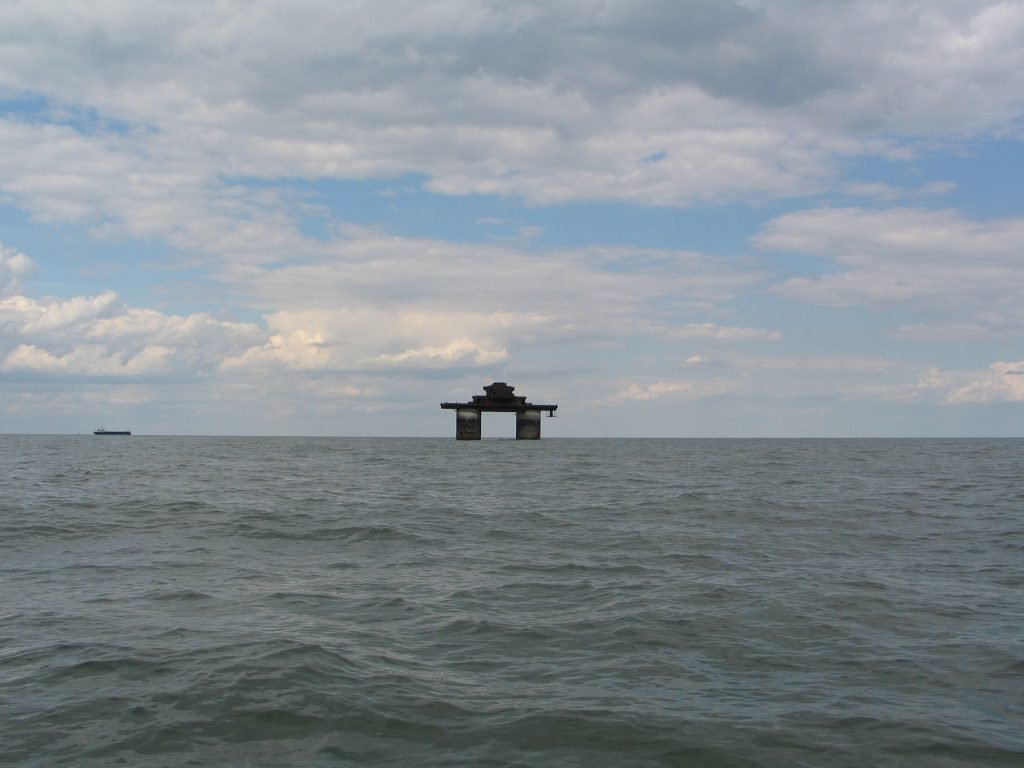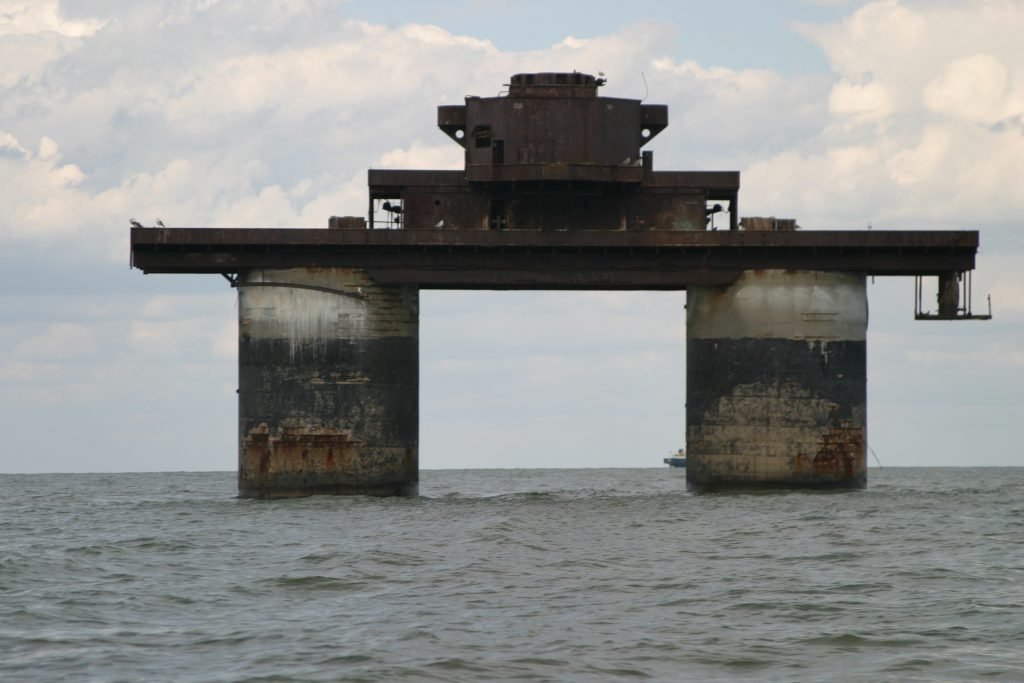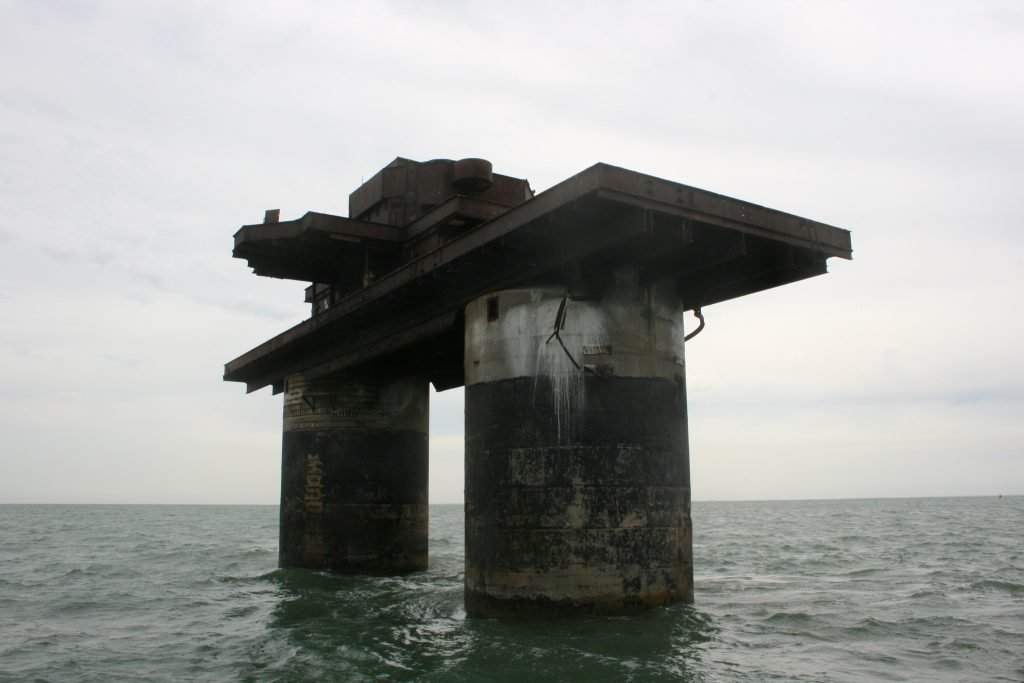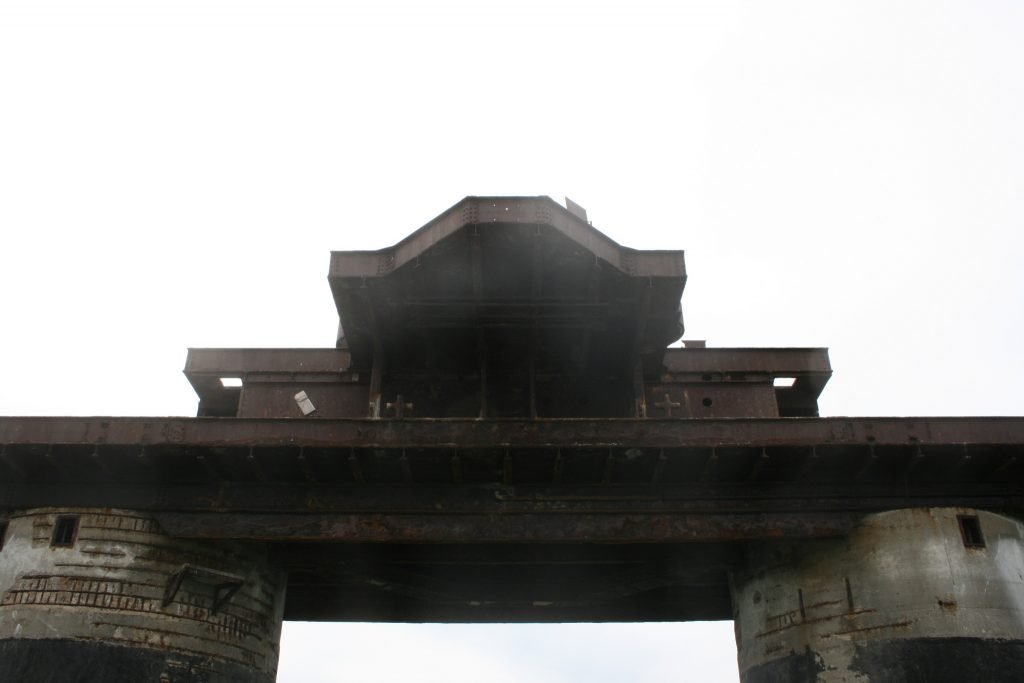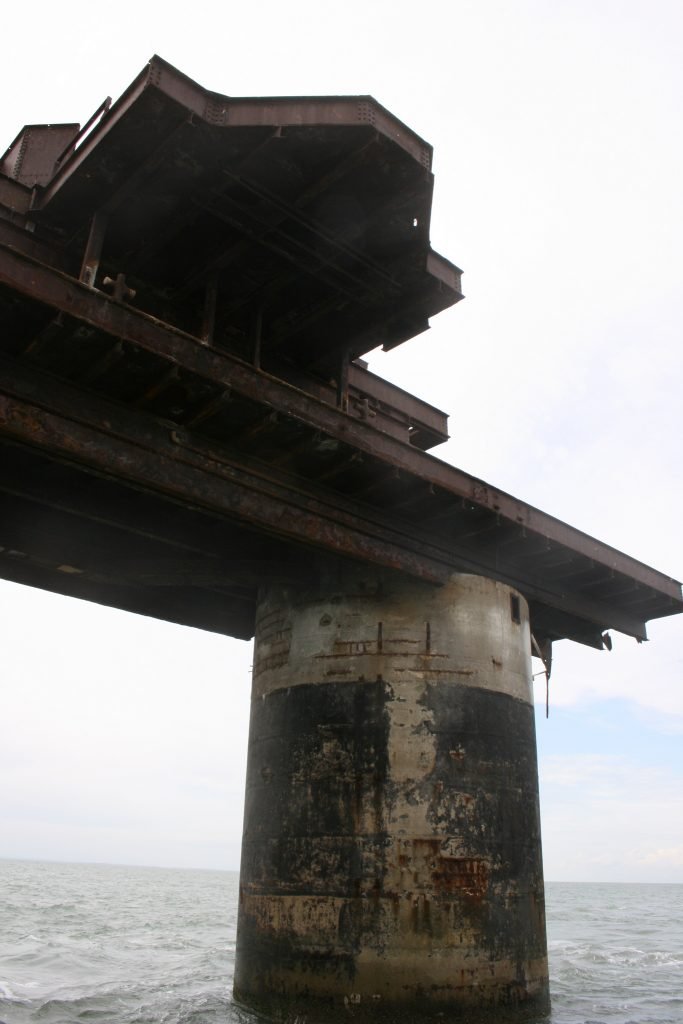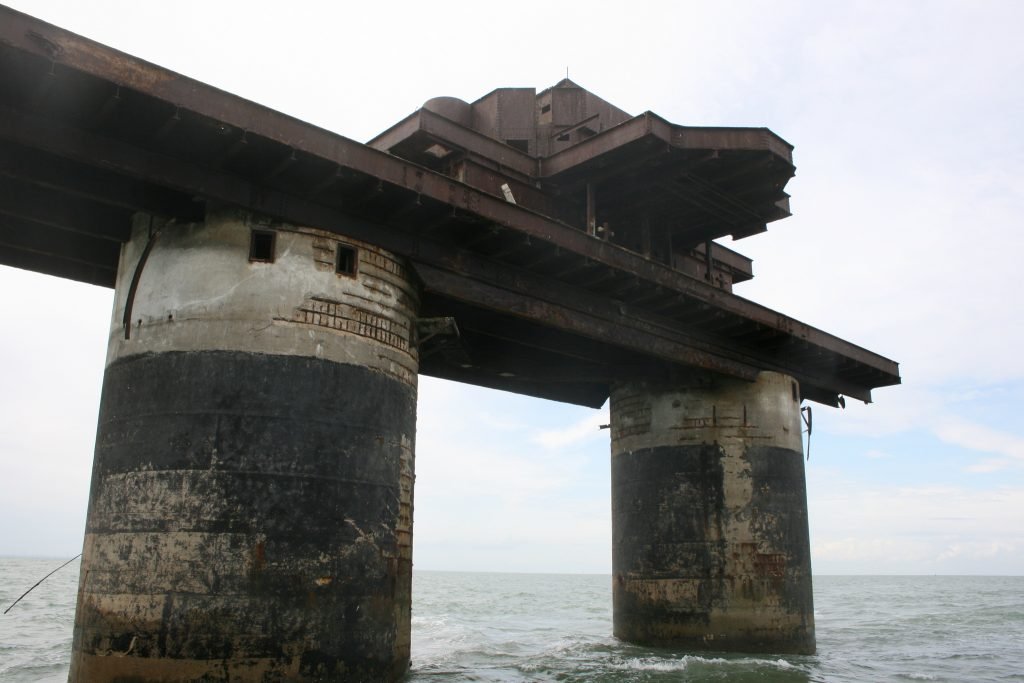Fort Knock John
The Maunsell Naval Sea Forts were designed to provide anti-aircraft defence in the Thames estuary after the Luftwaffe began their raids on London in 1940. The Thames estuary was not as heavily defended as Dover and the south coast and therefore presented a much easier approach to London for German bombing raids.
Fort Knock John, the last of the four Naval Sea Forts, was constructed at a disused cement works on the south bank of the Thames between Northfleet and Gravesend on the Kent Coast. Access to the Thames was therefore immediately available. The forts were constructed in dry dock then floated out to their designated site in the Thames Estuary and grounded.
The defence of the forts consisted of four guns, primarily two 3.7″ AA guns and two Bofors guns. The magazines were in the supports of the fort, well beneath sea level. A radar unit was housed on the very top of the fort, allowing the defending crew to monitor the Thames Estuary and mount their defence on sighting a Luftwaffe raid.
Fort Knock John was grounded on 1st August 1942 and records remain stating that the fort was in action against hostile aircraft on 3rd March 1943, 12th April 1943 and 3rd February 1944. Undoubtedly there were many other engagements for which records no longer exist.
All the forts were abandoned by the Navy in the late 1940’s. Fort Knock John was used briefly from 1965 – 1967 as a base for a pirate radio station before being abandoned in favour of another Naval Sea Fort further out to sea and therefore out of the reach of the jurisdiction of the British Government. In 1992 the RAF finally removed the four guns on Fort Knock John.
Knock John still stands in remarkably good condition today. It has weathered many North Sea storms, including the storms of 1958, 1977 and the Hurricane of 1987 that did so much damage to the Kent Coast. It is closely watched by HM Customs and Excise to ensure it cannot be used for contraband purposes. Boarding the fort is no longer possible as all access ladders have been removed.
Video Archive
Location: The Thames
Condition: Poor
Date Of Visit: 23/08/04
